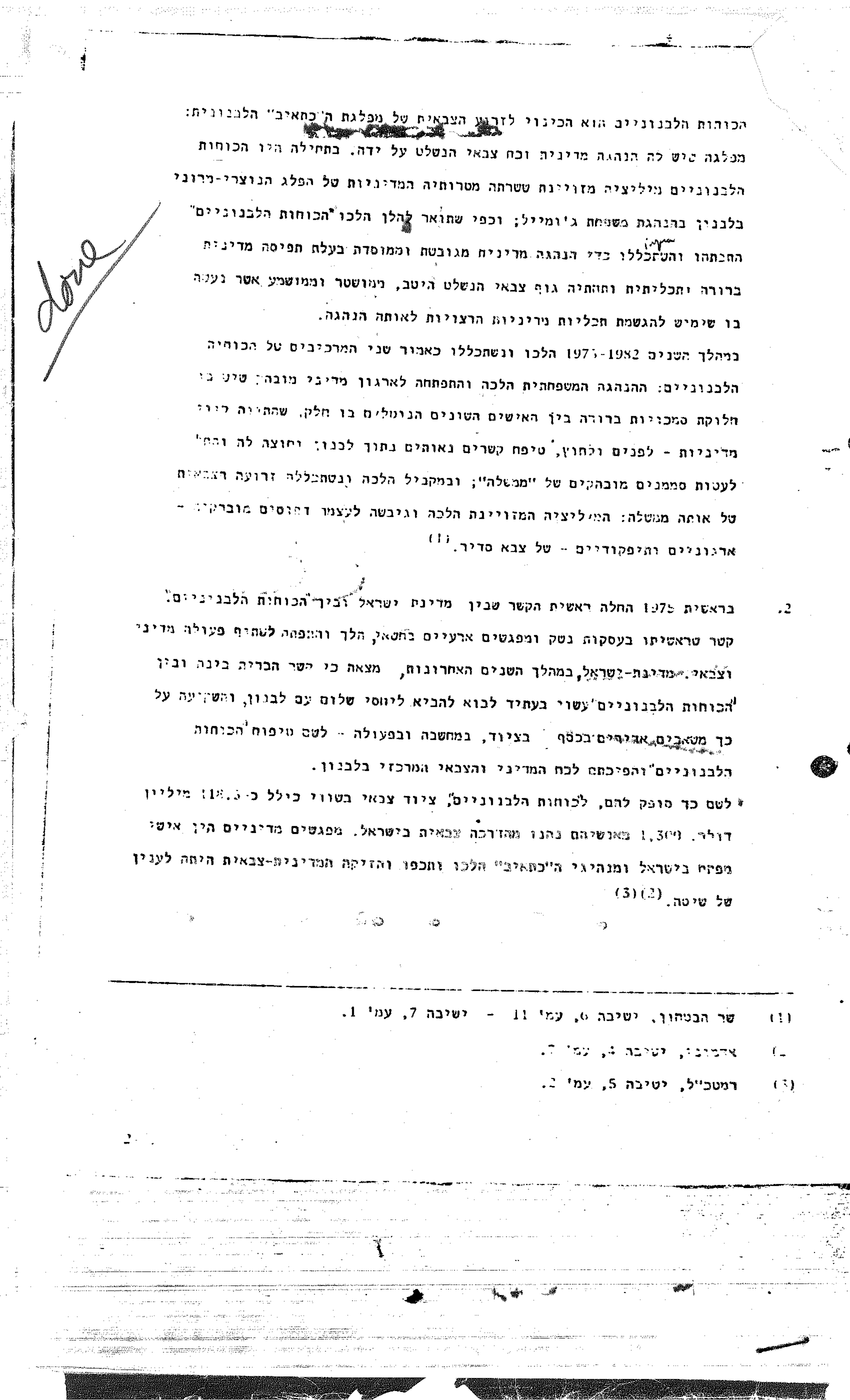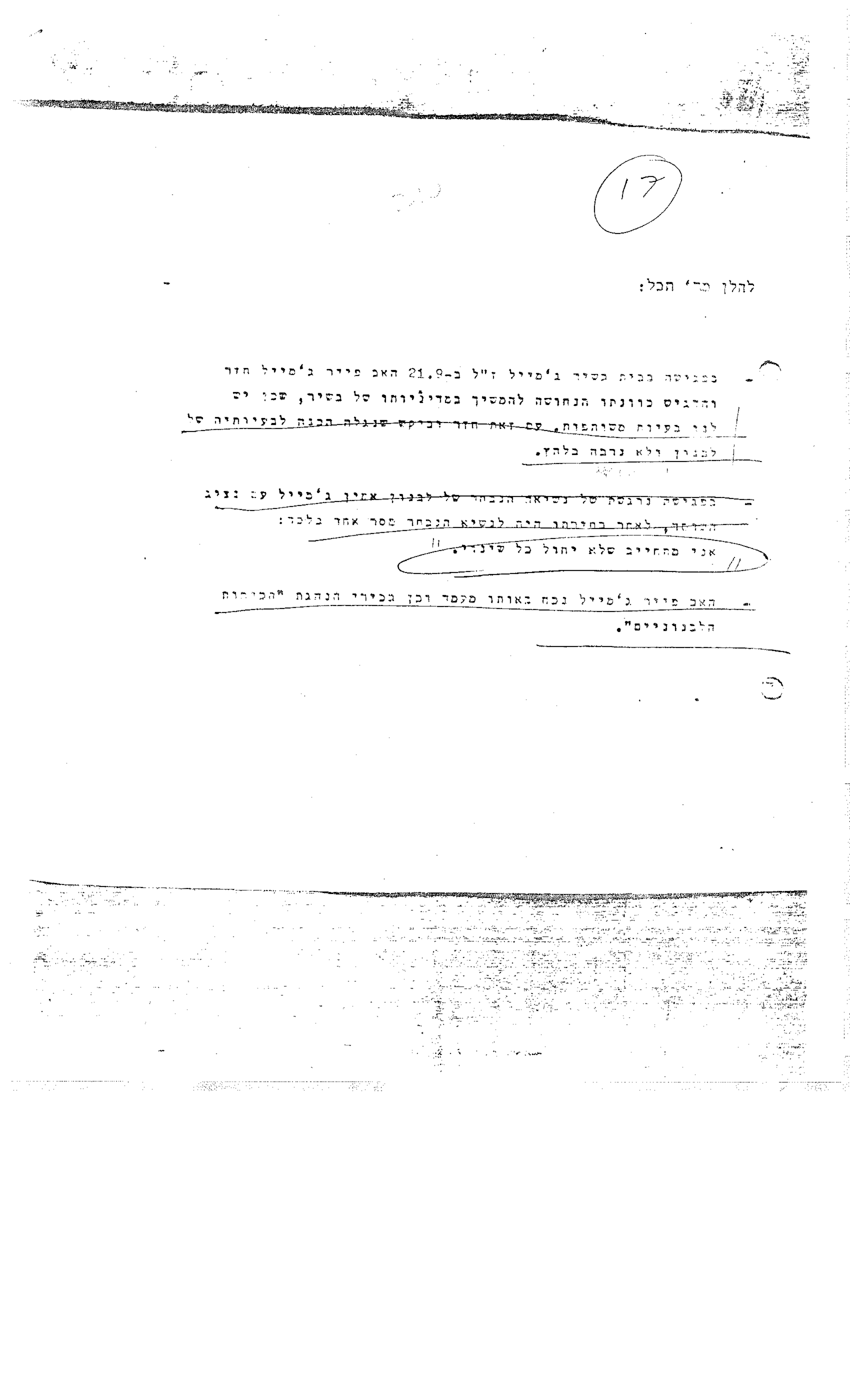Background to the 16-18 September 1982 Sabra-Shatila Massacre
Mouin Rabbani and Sherene Seikaly
On 6 June 1982, Israel invaded Lebanon. Advertised to the world as Operation Peace for Galilee, its actual code name was Operation Big Pines. It also had nothing to do with the Galilee. Rather, it constituted then-Minister of Defense Ariel Sharon’s attempt to remake the Levant in Israel’s image.
Best understood as the violent crescendo of US-Israeli-Egyptian diplomacy that commenced with Egyptian President Anwar Sadat’s 1977 visit to Jerusalem, the invasion was made possible by Egypt’s unilateral withdrawal from the Arab-Israeli equation. Now able to devote itself fully to resolving the question of Palestine on its own terms, which were crucially endorsed by Egypt and supported by the United States, Israel sought to eradicate the Palestine Liberation Organization (PLO), and with it organized Palestinian resistance in the West Bank and Gaza Strip in order to enable the further absorption and eventual annexation of these territories. Syrian forces were to be expelled from Lebanon, with the subsequent installation of a puppet regime led by Bashir Gemayyel, whose Phalange Party was directly inspired by European fascism (including Hitler’s NSDAP). Gemayyel was to have joined Egypt in concluding a peace treaty with Israel on the latter’s terms, and expel Lebanon’s remaining Palestinians to Jordan, where they would eventually replace the Hashemite monarchy with a Palestinian state east of the River Jordan.
Israel’s imperial hubris was matched only by the extreme, pitiless violence of its execution, which claimed some twenty thousand dead and many more wounded, the overwhelming majority of them civilian non-combatants. During the war, the Phalange balked at their marching orders to wrest West Beirut from its defenders. Israel nonetheless forced Gemayyel’s election as Lebanon’s new president as the PLO, which had withstood an Israeli siege lasting seven weeks, evacuated the Lebanese capital.
Before Gemayyel could take office and fulfill Israel’s ambitions, he was knocked off by a bomb placed in his party’s headquarters by Lebanese militant Habib Shartouni. Sharon, still seething at his failure to liquidate the PLO and its leadership, incited and mobilized the Phalange militia to take revenge on the now defenseless Palestinian refugee camps of Sabra and Shatila. For three days, from 16-18 September 1982, Phalange militiamen aided and abetted by the Israeli military, and effectively operating under their command, raped, murdered, and mutilated their way through the camps. The final death toll remains a matter of conjecture, ranging from the high hundreds to several thousand.
That the Sabra-Shatila Massacre could occur at all cannot be understood without reference to the United States. The Reagan administration greenlighted the invasion. Moreover, Washington prematurely withdrew the marine contingent it had dispatched to Beirut in a pledge to secure against the very scenario that unfolded. This departure, in turn, hastened the withdrawal of the Italian and French contingents that had joined them.
The 1983 MacBride Commission Report, chaired by 1974 Nobel Peace Prize laureate Sean MacBride, concluded that Israel was directly responsible for the massacre. This responsibility was due not only to the reality that it was the occupying power in West Beirut, but also on account of its participation in the planning, aiding, and abetting of the mass killings. Israeli journalist Amnon Kapeliouk and Palestinian researcher Bayan Nuwayed al-Hout reached similar conclusions in their respective exhaustive investigations of the massacre.
However, it was Israel’s official inquiry into these events, the Kahan Commission, that garnered the lion’s share of publicity. Concluding that the massacre was a Phalange affair in which Israel was only indirectly at fault, the commission delivered some mild slaps on Israel’s wrist. The most prominent in this respect was its view that Ariel Sharon bore “personal responsibility,” not for the massacre but rather for failing to prevent it. Although the Kahan Commission recommended that Sharon be relieved of his ministerial post, it did not conclude that he should be charged with any crimes.
The Kahan Commission’s flawed conclusions came under withering criticism, from journalists present at the scene of the crime, jurists committed to the search for justice rather than the political exoneration of the crime’s architects, and from researchers and scholars.
Among the missing pieces of the puzzle have been the documents that comprise the secret appendix to the 1983 Kahan Commission report, and which were presumed to include valuable information that could assist the search for truth. In making this material available, Seth Anziska, who has also revealed additional details on the US role during the Sabra Shatila massacres, has performed an extraordinary service. The information revealed in these documents is significant in three respects. They keep the memory of the victims alive. They further clarify how this massacre was perpetrated, and they provide new impetus to efforts to hold Israel accountable for its actions in the courts of both public opinion and international law.
On the Kahan Documents
Anziska obtained this archive from William B. Quandt, a Middle East specialist who served on the National Security Council during the Nixon and Carter administrations. As a consultant to Time magazine’s legal team when it was sued by Sharon over its reporting of the massacres, Quandt received a copy of these documents during the 1980s. The material was authenticated as part of the unpublished Kahan Appendix, the extent of which remains unknown. Impressed by Anziska’s research on these events, Quandt provided him with these documents, which Anziska took the initiative to make public. Collectively, these documents shed valuable additional light on one of the most horrific bloodbaths of the late twentieth century. While the below English translation documents have also been published by the Institute for Palestine Studies and New York Review of Books, the original Hebrew documents are here made publicly available for the first time.
Anziska’s revelations are also crucial because they lay bare the links between knowledge production, archives, and politics. Historical evidence is a battleground. Every single Israeli attack on Palestine or the Palestinians has targeted archives. In 1948, this happened en masse. Many family papers and other collections have since resurfaced in various Israeli libraries and archives. In 1982 Israel looted the Palestine Research Center in Beirut and carted off its entire contents. Such plunder did not happen only during major wars. It happens at every intersection of Israeli conquest and settlement, and is part of everyday life. In addition to this broader colonial conquest, research in Israeli archives is increasingly restricted through digitization. Israeli scholars and commentators have suggested that digitization provides new means of censorship. In this sense, Israel is not an exception. In many places, the call to digitize as a means of expanding access has also served to survey and censor records, and survey and monitor those who access them online.
Kahan Commission Document: Sharon Document Part I (English)
[Click the image to download the document in full.]
Kahan Commission Document: Sharon Document Part II (English)
[Click the image to download the document in full.]
Kahan Commission Document: Sharon Document Part III (English)
[Click the image to download the document in full.]
Kahan Commission Document: Sharon Document Part I (Hebrew)
[Click the image to download the document in full.]
Kahan Commission Document: Sharon Document Part II (Hebrew)
[Click the image to download the document in full.]




